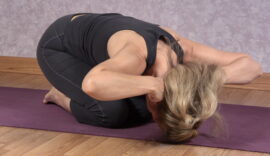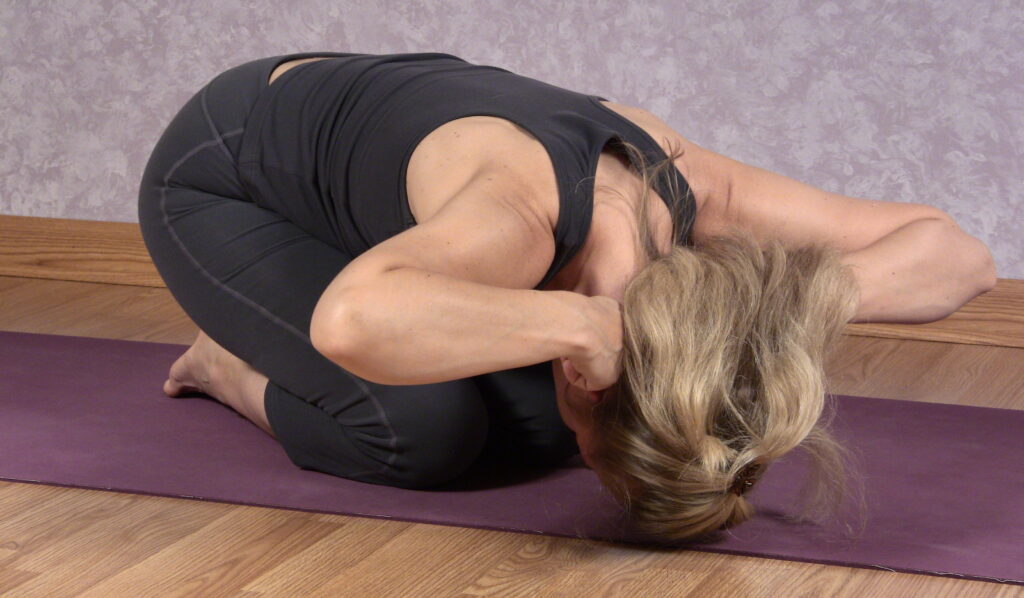Category: Menopause
Hormone Yoga Therapy: A Natural Alternative to HRT
For many women, the transition into perimenopause and menopause comes with frustrating symptoms—hot flashes, mood swings, fatigue, insomnia, or lack of vitality. While conventional medicine often prescribes Hormone Replacement Therapy (HRT) to relieve these discomforts, not every woman feels comfortable with its risks or long-term effects. This is where Hormone Yoga Therapy (HYT), designed by Dinah Rodrigues, offers a natural, empowering alternative. Through specific yoga postures, breathing techniques, and energy circulation practices, HYT helps reactivate hormone production and restore balance—without relying on synthetic hormones.
Health Risks of Hormone Replacement Therapy
Hormone Replacement Therapy has been widely prescribed for decades to address menopausal symptoms. While effective for some, it is not without risks. Studies have linked long-term use of HRT to increased chances of:
- Breast cancer and endometrial cancer: Certain types of hormone therapies may stimulate cell growth in tissues that are sensitive to estrogen.
- Blood clots and stroke: The synthetic hormones in HRT can raise the likelihood of clotting, which increases stroke risk.
- Heart disease: For women starting HRT later in life, cardiovascular complications can be more common.
- Gallbladder disease: Research also shows a higher incidence of gallstones and gallbladder-related issues.
Because of these potential complications, many women search for safe, natural approaches to ease menopause. HYT provides exactly that.
What Is Hormone Yoga Therapy by Dinah Rodrigues?
Hormone Yoga Therapy (HYT) is a scientifically designed yoga sequence developed by Brazilian psychologist and yoga teacher Dinah Rodrigues. At age 65, Rodrigues began studying how yoga could positively influence hormonal health. Now in her late 90s, she is living proof of the method’s vitality.
HYT combines four powerful elements:
- Dynamic yoga postures to stimulate the glands responsible for hormone production, especially the ovaries, thyroid, pituitary, and adrenal glands.
- Pranayama (breathing techniques) that enhance energy flow and improve circulation in the reproductive and endocrine systems.
- Tibetan energy circulation techniques that direct energy toward hormone-producing glands.
- Relaxation and mindfulness practices that reduce stress, a major factor in hormonal imbalance.
The sequence is specifically designed to reactivate the body’s natural hormone production and ease symptoms of menopause, PMS, infertility, polycystic ovary syndrome (PCOS), and thyroid imbalances.
How Hormone Yoga Therapy Works in the Body
The science behind HYT lies in its targeted approach. Unlike general yoga practices that work on the body as a whole, HYT emphasizes the endocrine system—the network of glands responsible for hormone production.
- Stimulating the ovaries: Specific asanas (poses) increase blood flow and energy to the pelvic region, supporting estrogen production.
- Activating the thyroid and pituitary glands: Postures involving neck and chest openings help regulate metabolism, mood, and reproductive cycles.
- Reducing cortisol: Through deep breathing and relaxation, HYT lowers stress hormone levels, which often disrupt hormone balance.
- Boosting overall energy: Practitioners often report higher vitality, improved sleep, and better emotional balance within weeks of regular practice.
This makes HYT more than just a yoga practice—it’s a holistic therapy for women’s health at every stage of life.
Benefits of Hormone Yoga Therapy
Many women who practice HYT consistently experience remarkable changes. Reported benefits include:
- Reduced or eliminated hot flashes
- Improved mood and emotional stability
- Restored libido and vitality
- Better sleep and reduced fatigue
- Support for fertility and cycle regulation
- Greater overall well-being and energy
Scientific studies conducted by Rodrigues and her collaborators have shown that regular HYT practice can raise hormone levels naturally, leading to measurable improvements in quality of life.
Read MoreHot Yoga and The Effects on Menopause
Understanding Hot Yoga: Origins and Physical Impact
Hot yoga, a practice performed in a heated room, has gained popularity for its intense workout and detoxifying effects. But what exactly is hot yoga, and from which style does it derive? Originating from Bikram Yoga, hot yoga typically involves a sequence of 26 postures and two breathing exercises practiced in a room heated to around 105°F (40°C) with 40% humidity. The intense heat is designed to replicate the climate of India, where yoga originated, enhancing flexibility and promoting sweating to detoxify the body.
Physically, hot yoga offers numerous benefits. The heat allows muscles to stretch more deeply and safely, which can improve flexibility. The intense sweating helps flush out toxins, potentially leading to clearer skin and improved overall health. Additionally, the cardiovascular demand of practicing yoga in a hot environment can boost heart health and aid in weight loss. But what does this mean for women going through menopause?
Menopause Needs: Can Hot Yoga Make Symptoms Worse?
Menopause brings about a host of changes and challenges for women, including hot flashes, night sweats, mood swings, sleep disturbances and many more issues. These symptoms can significantly impact daily life and well-being. During this transition, women need supportive practices that can help alleviate symptoms rather than exacerbate them.
The heat in hot yoga might seem counterintuitive for women experiencing menopause, especially those suffering from hot flashes and night sweats. The added heat could potentially worsen these symptoms, making hot yoga a less desirable option for some women during this time. It’s crucial for women to listen to their bodies and consult with healthcare professionals who knows about yoga and its various yoga styles to determine if hot yoga is appropriate for them.
However, some women might find the physical activity and the detoxifying effects of sweating beneficial, helping to reduce stress and improve overall mood. It’s a personal choice that should be made based on individual symptoms and comfort levels.
Alternative Yoga Styles for Menopause Support
For women seeking yoga practices that better support their menopausal journey, several styles can be more accommodating and beneficial than hot yoga.
Restorative Yoga: This gentle, calming practice focuses on relaxation and stress relief. Using props to support the body in various poses, restorative yoga allows for deep rest and recovery, which can be particularly helpful for managing mood swings and sleep disturbances.
Yin Yoga: targets the deep connective tissues and fascia, promoting flexibility and joint health. Poses are held for extended periods, encouraging a meditative state that can help reduce stress and anxiety, common during menopause.
Hatha Yoga: Known for its slower pace and emphasis on breathing, Hatha yoga can help balance hormones and improve overall well-being. It combines physical postures with mindfulness, making it a great option for women looking to manage menopausal symptoms.
Gentle Yoga: Similar to restorative yoga, gentle yoga focuses on slow, mindful movements and deep breathing. It’s an excellent way to maintain physical activity without the intensity of hot yoga, reducing the risk of exacerbating menopausal symptoms.
Hormone Yoga Therapy: A Natural Alternative
Hormone Yoga Therapy (HYT) offers a specialized approach to managing menopause. This practice, developed by Brazilian yoga teacher Dinah Rodrigues, involves a specific sequence of dynamic postures, breathing techniques, and energy channeling practices designed to stimulate hormone production and balance the endocrine system.
HYT combines elements of Hatha, Kundalini, and Tibetan energy techniques to target the glands responsible for hormone production, such as the ovaries, thyroid, and pituitary gland. The sequence is complemented by relaxation and visualization exercises to reduce stress and improve mental clarity. This holistic approach aims to alleviate symptoms like hot flashes, mood swings, and fatigue, providing a natural alternative to Hormone Replacement Therapy (HRT).
Women practicing HYT often report improved energy levels, better mood stability, and a reduction in menopausal symptoms. As with any yoga practice, it’s important to learn from a qualified instructor to ensure safety and effectiveness.
Call to Action
If you want to know more about Hormone Yoga Therapy, the natural alternative to Hormone Replacement Therapy, and learn what kind of yoga women should practice during menopause and post-menopause, contact Katrin Elia Yoga/Healing Center in Palm Harbor, FL for a consultation. Phone: 610.662.1130, email: katrin@katrineliayoga.com.
By understanding the effects of hot yoga and exploring supportive alternatives, women can find the right practice to navigate menopause with greater ease and well-being.
Read More





